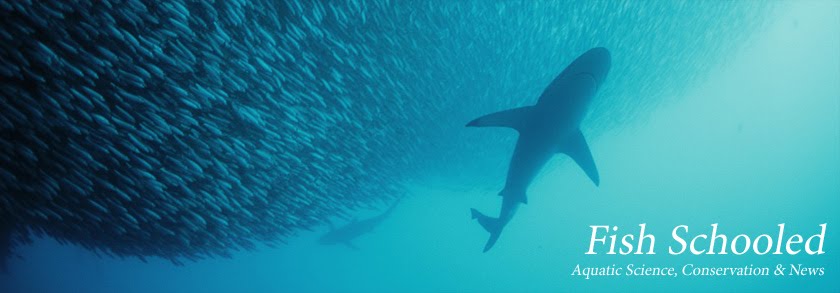
This study really excites me as it shows how functional morphology and swimming mode can be reflected in the ecology and evolution of animals. The authors in this study used digital particle image velocimetry (DPIV) to measure the wakes produced by swimming jellyfish. DPIV is a technique where you place neutrally buoyant beads into the water that fluoresce under light. You then shine a plane of light through the water and measure the movement of those beads, which is typically caused by some biological organism such as a moving or feeding animal. For example here is a DPIV of fish suction feeding with shrimp as prey.
So back to the science. In this study two distinct types of wake patterns were formed behind the jellyfish. All jellyfish form vortex rings in their wakes. As the wake vortices grow during the formation process, which occurs during the contraction phase of swimming, the vortices approach a maximal limit for their size. In some jellyfish, within this study, this limit is not met and so their wake consists of a single vortex ring in their wake. In others this limit is passed, and as such can no longer incorporate or entrain the additional fluid, and thus a trailing jet is produced behind the vortex ring.
What they found was that those species that formed vortex rings had less effective propulsion compared to those that produced a trailing jet. However, producing vortex rings for locomotion was more energetically efficient than producing a trailing jet. In short, you either move quickly but for short periods, or you move more slowly but continuously. The cool part was that they found that those species that forage by continuously cruising are the species that produce vortex rings without trailing jets (energy efficient mode), whereas those species that ambush their prey produced trailing jets (speed mode). This of course makes perfect functional sense. This is a trade off and there was no species that could move both quickly and for long periods.

It seems (by the title of the post) that you (or the authors) interpret the story as an optimal feeding behavior emerging from locomotion style.
ReplyDeleteBut couldn't an optimal locomotion pattern have emerged from some environmental constraint on feeding behavior?
Though now I see they used the word "correlate" in their paper.
ReplyDeleteYes the two would probably evolve hand in hand. But I was more thinking of a catchy title than necessarily a correct one.
ReplyDelete